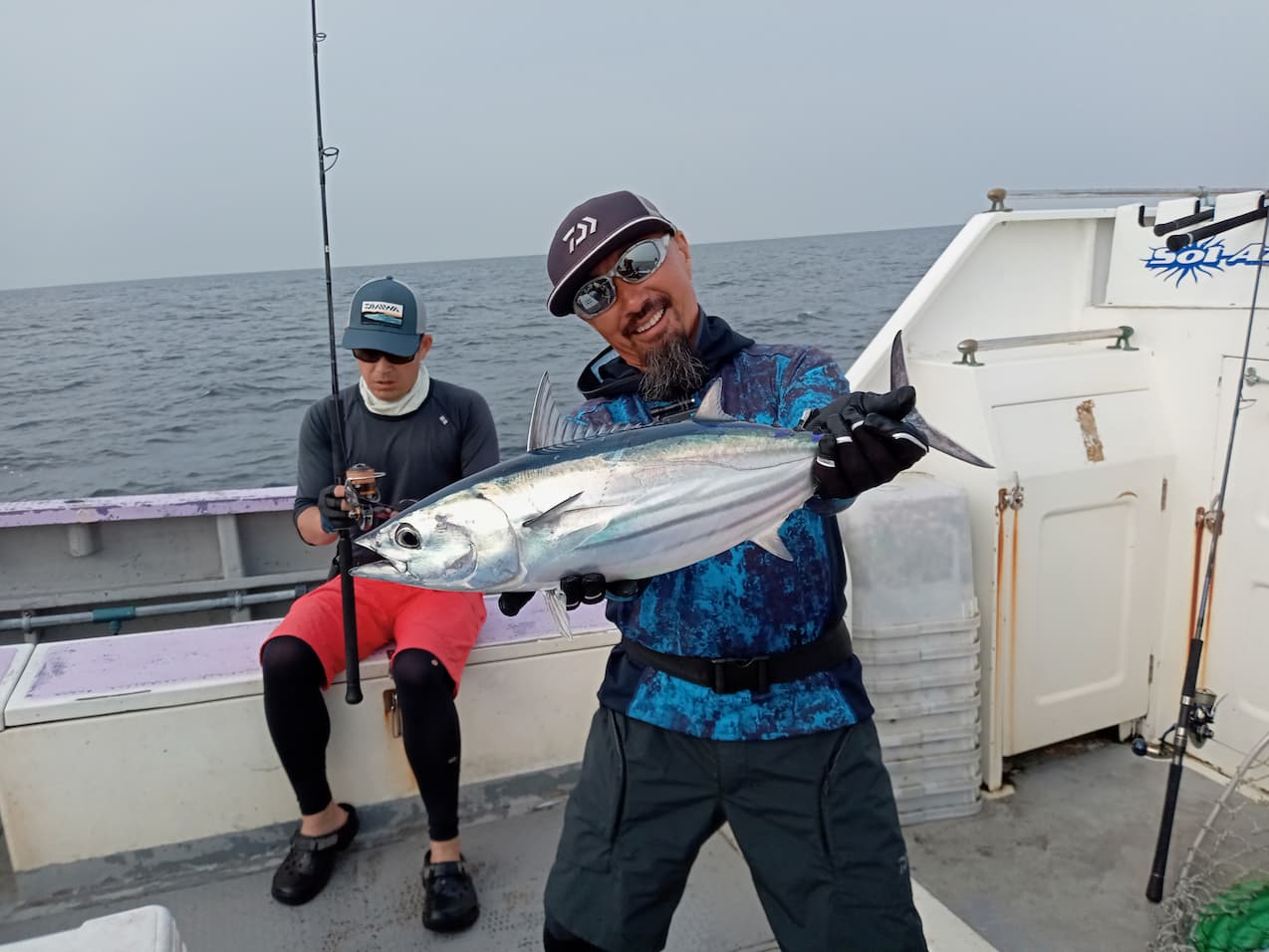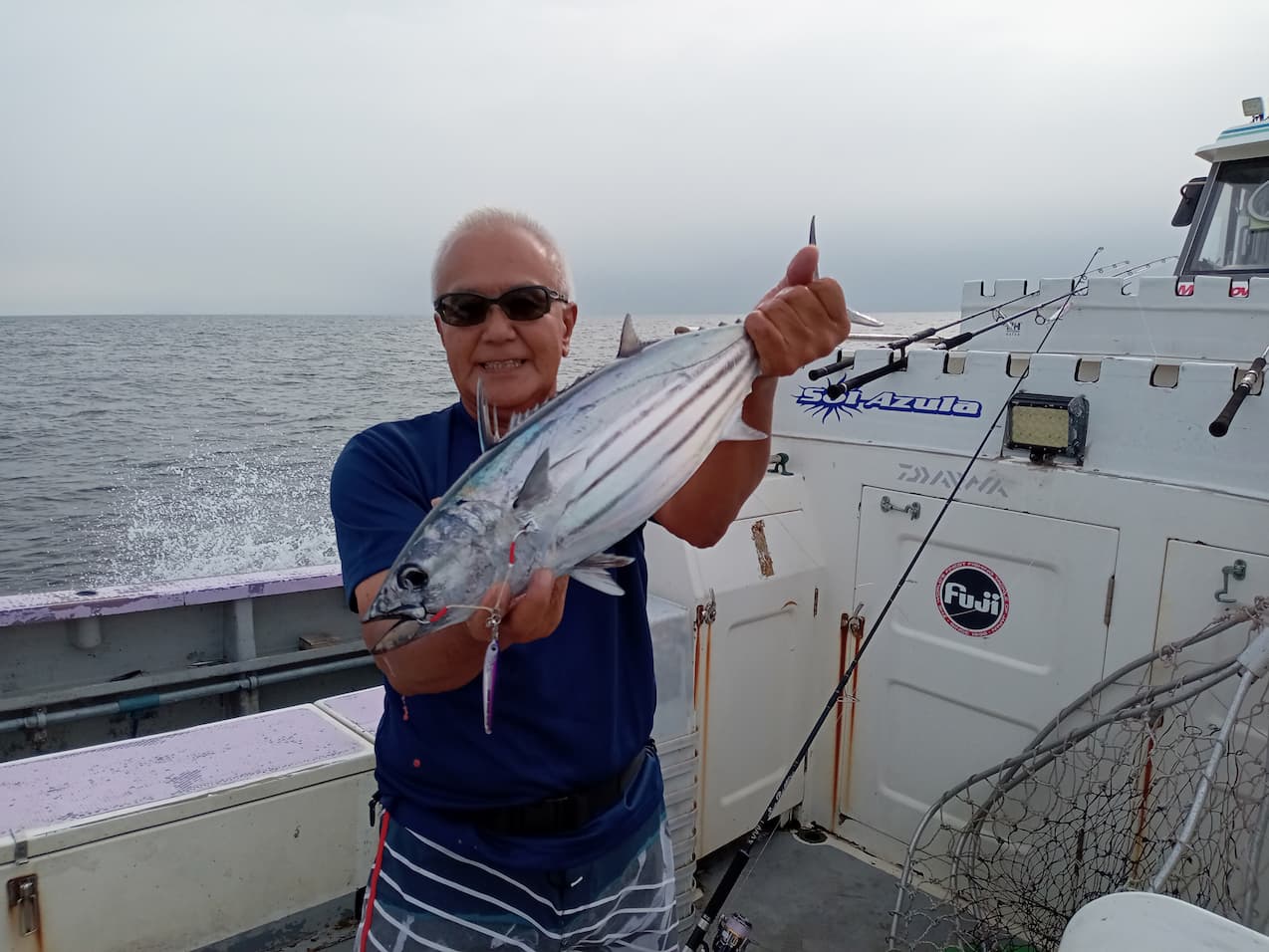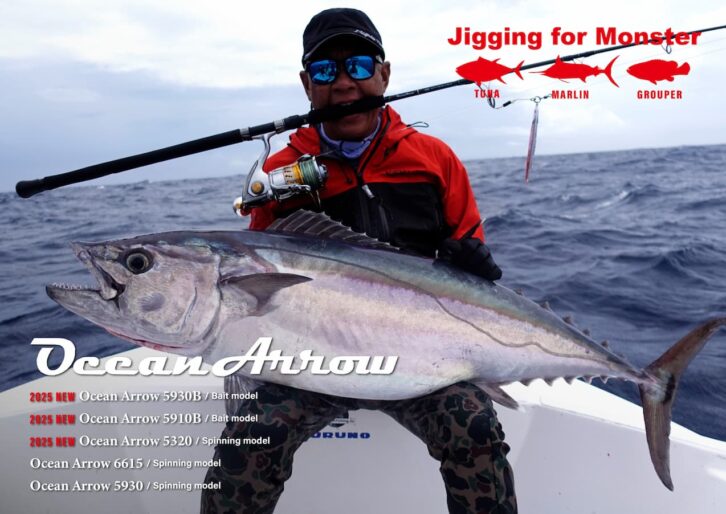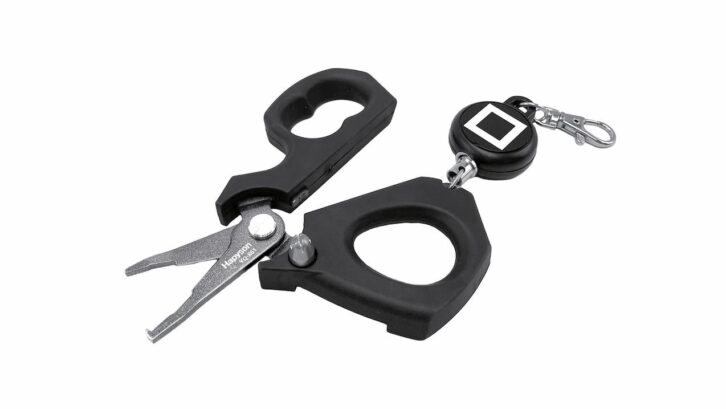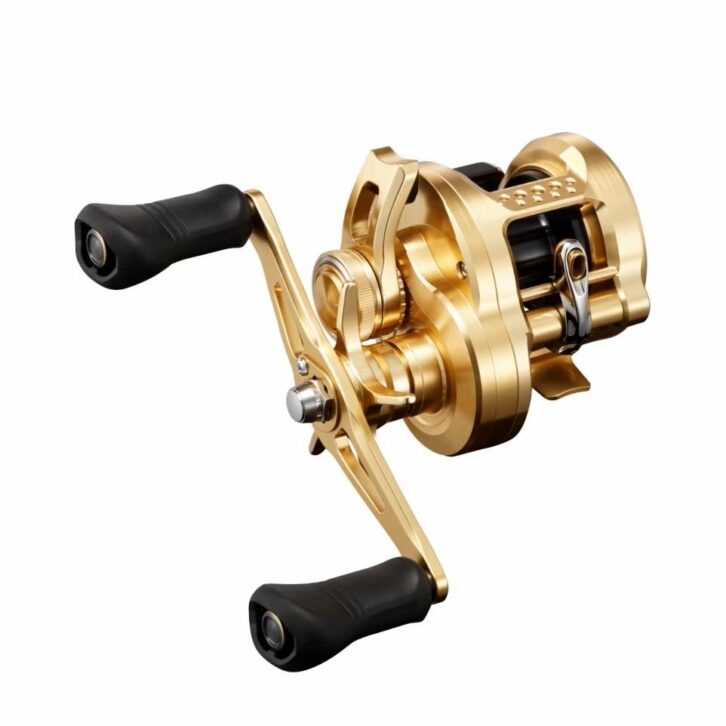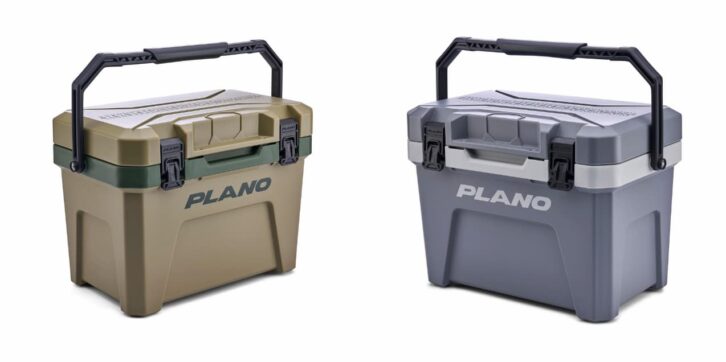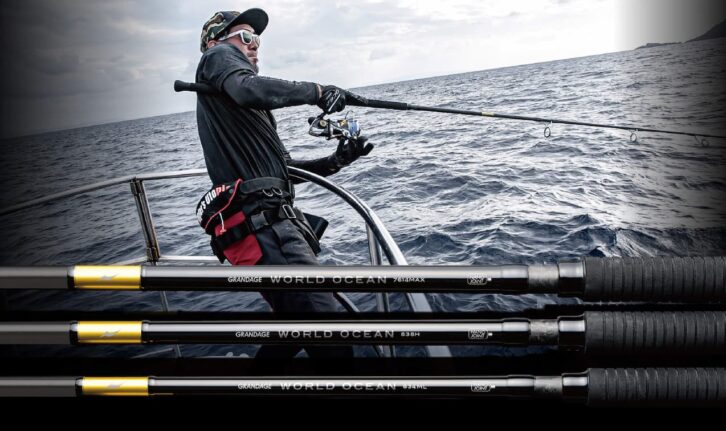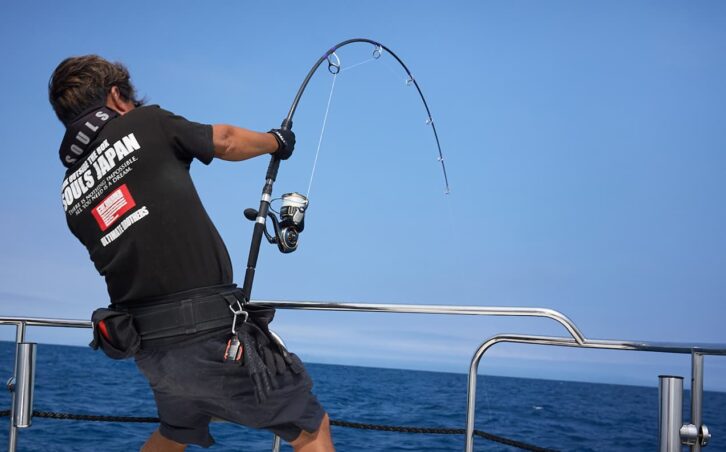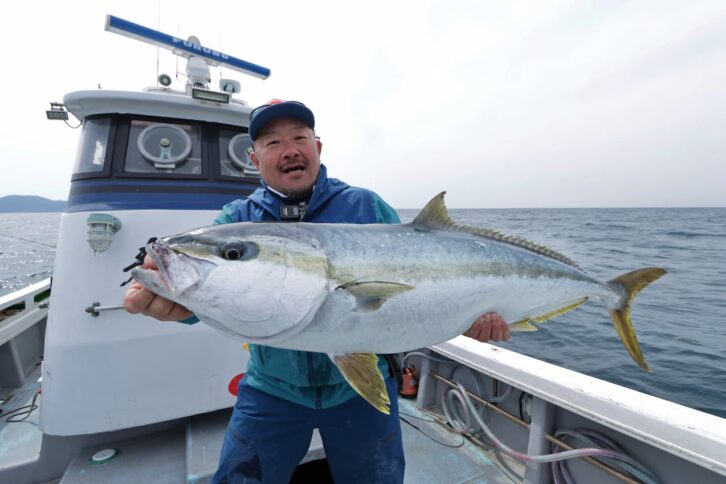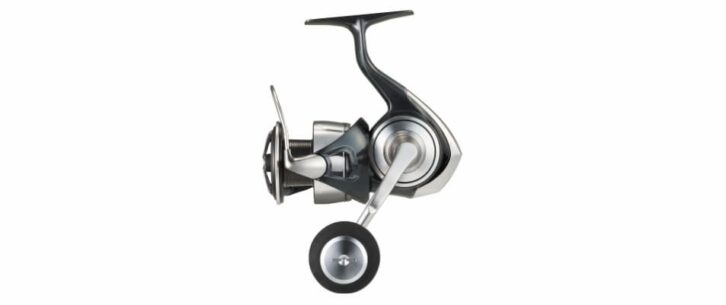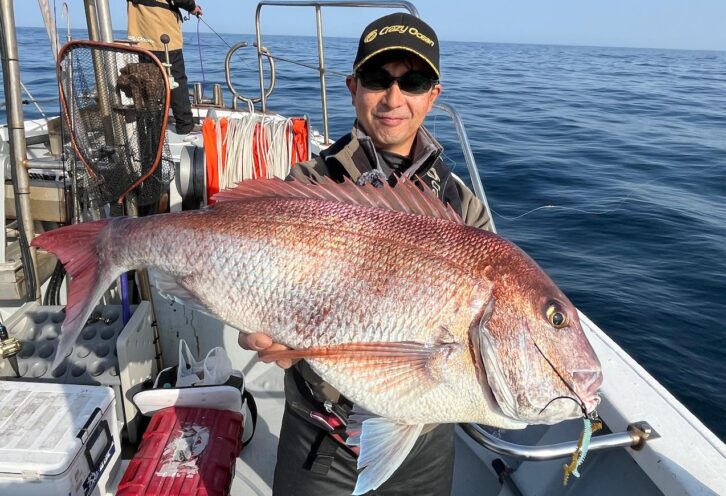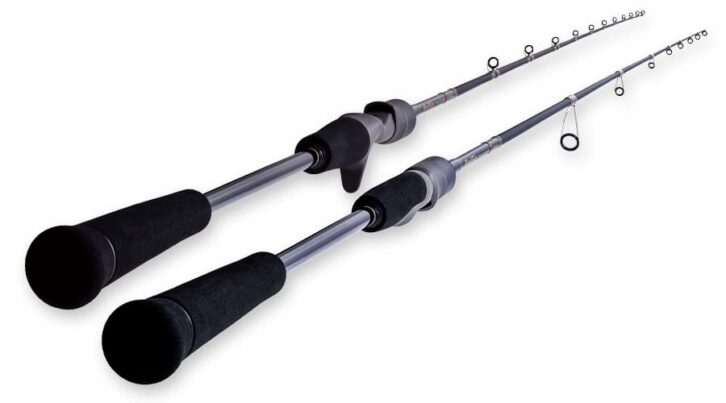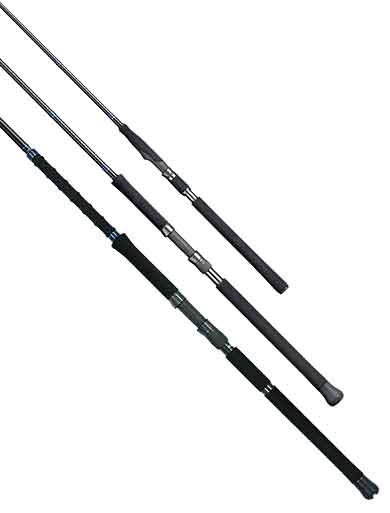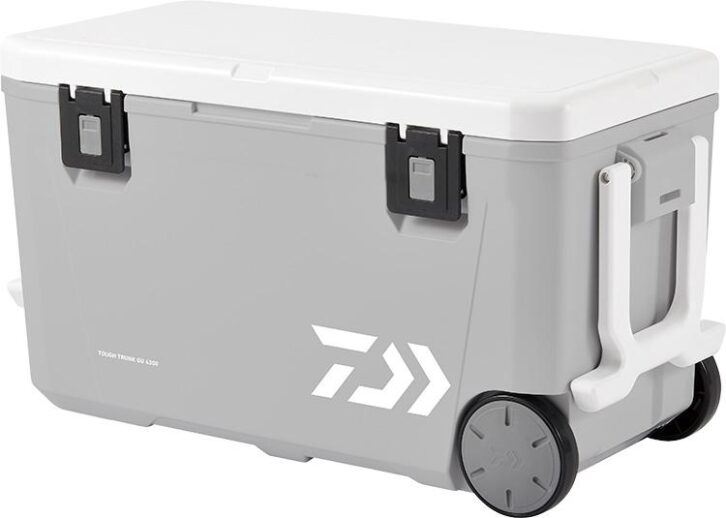The strong pull and the freshness of the product also make it tasty!
Strong performance this season! Bonito Casting Explained by Takashi Kamiyashiki! Tackle, fishing method, and fighting method
From spring to fall, bonito can be seen migrating to Sagami Bay depending on the Kuroshio Current's diversion. Depending on the year, it sometimes slips away quickly and the catch depends on timing, while other times it may continue to migrate for a long time in Sagami Bay where baits are plentiful. This year, Sagami Bay bonito have been doing well since early spring. Mr. Kamiyashiki of Mangrove Studio, who frequents Sagami Bay, explained the situation and tackle for fishing. Please read this article before you go fishing.
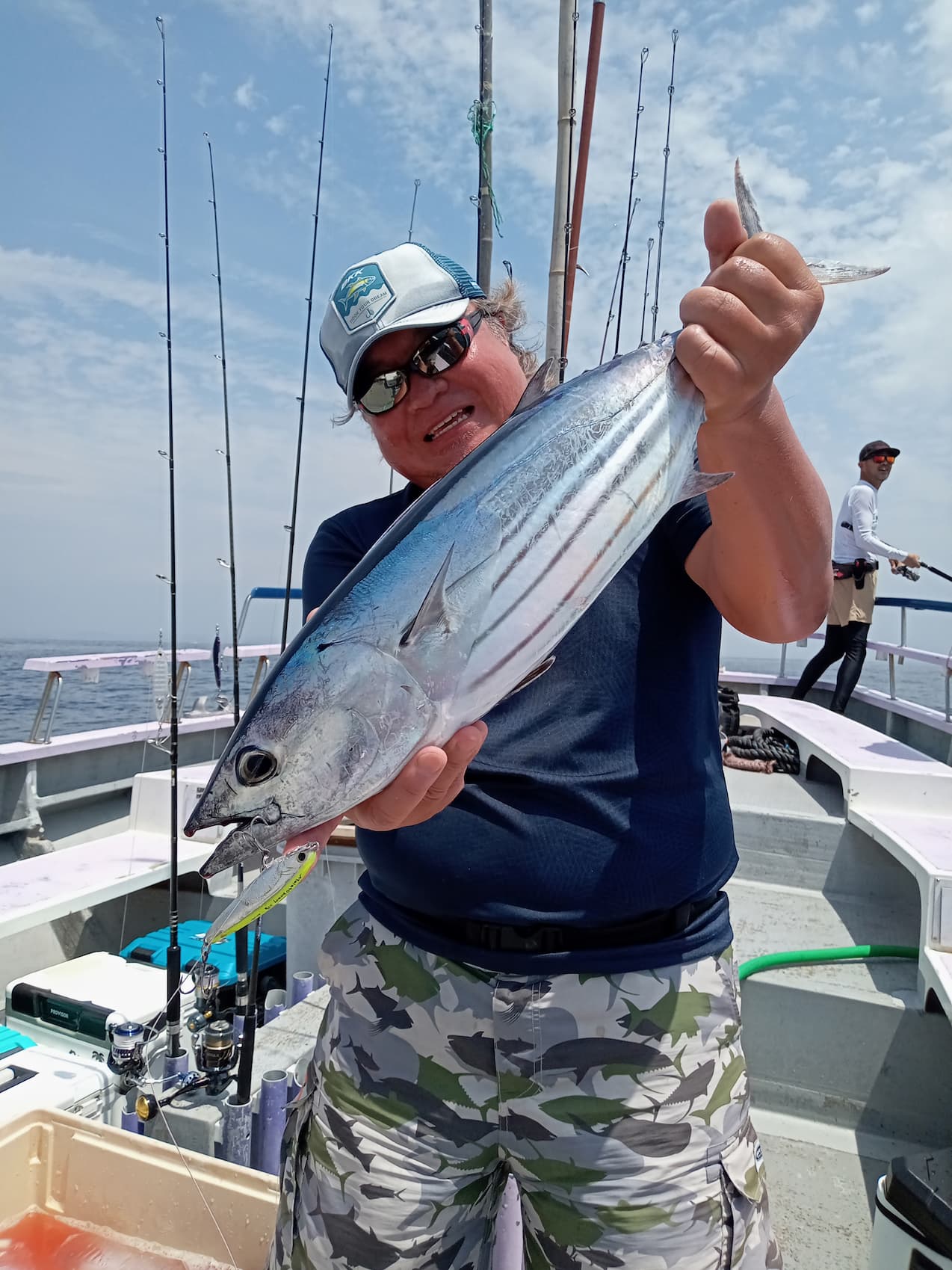
INDEX
Sagami Bay Bonito Migrating Long into 2024
The most popular casting games in Sagami Bay from spring to autumn are yellowfin tuna and dolphinfish. Both of these fish are popular with anglers, but the fish that anglers want to catch with them on their fishing trips are skipjack tuna. This season, for the first time in several years, such bonito have appeared early in May.
Although the amount of skipjack in Sagami Bay varies from year to year, they begin to show up in early spring. Sometimes they stay for a while, but other times they leave the bay soon after. In August, the ban on the use of komaeshi fishing boats is lifted. The presence of the baitfish makes them stay in the bay, but it is often slightly more difficult to target them by casting. The situation can change drastically as the season progresses, so anglers who want to enjoy casting should go fishing as soon as the fish are migrating or being caught.
Anglers, including myself, who often board a boat for sea lion casting, also observe the movement of drifters and birds while targeting sea lions. They want to be able to sense that baits are near large whales, dolphins, and sharks, and that schools of bonito are close by. When they suddenly appear, we will attack them with tackle and lures that are designed for bonefish.

In 2024, Sagami Bay skipjack are doing better than usual. Early in the season, they often drop out quickly, but this year they are staying in the bay for a long time. It is a good chance.
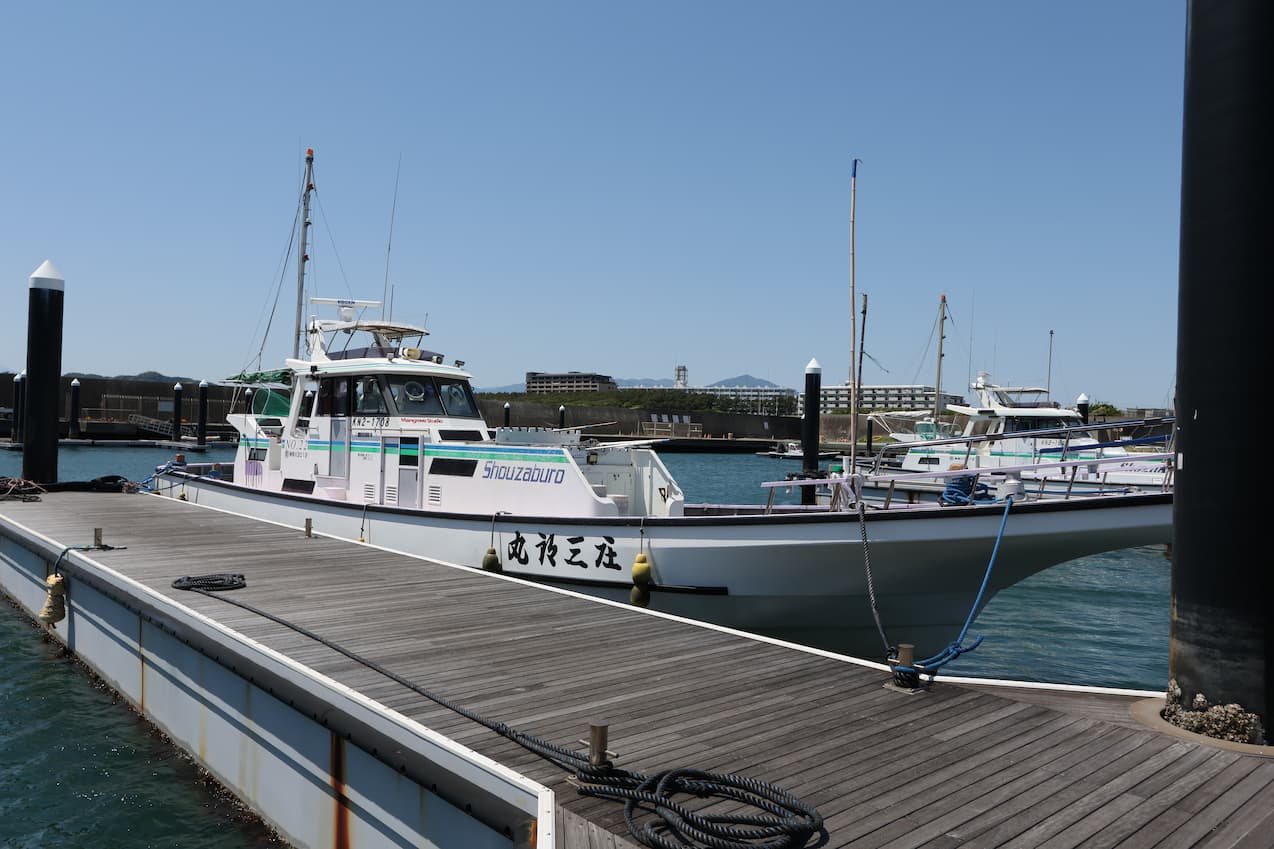
Shozaburomaru, a long-established fishing boat in Hiratsuka. They operate a passenger boat during the season to target dolphinfish, and bonito can be targeted there. The passenger boats make it easy to try. There are many pleasure boats in Sagami Bay, and you can choose from passenger boats and tailor-made boats.
Shozaburomaru
https://www.shouzaburo.com/
How to Target Bonito?
First, a school of Japanese anchovy is lifted up to the surface of the sea and is targeted by birds from above, and from below, the bonito are feeding on them as if they are being sogged from one end to the other. This is found and the plug is cast. Another way to target skipjack is to find and search for “mizumochi,” which appear to move in schools on the surface of the sea. This is also a good chance to find them. In calm seas, anglers and captains who are accustomed to fishing in calm seas will be able to find them easily. Of course, while on the move, we should always observe our surroundings and let the captain know immediately if there are any changes in the water surface, such as birds striking the surface or bait or bonito on the surface of the water.
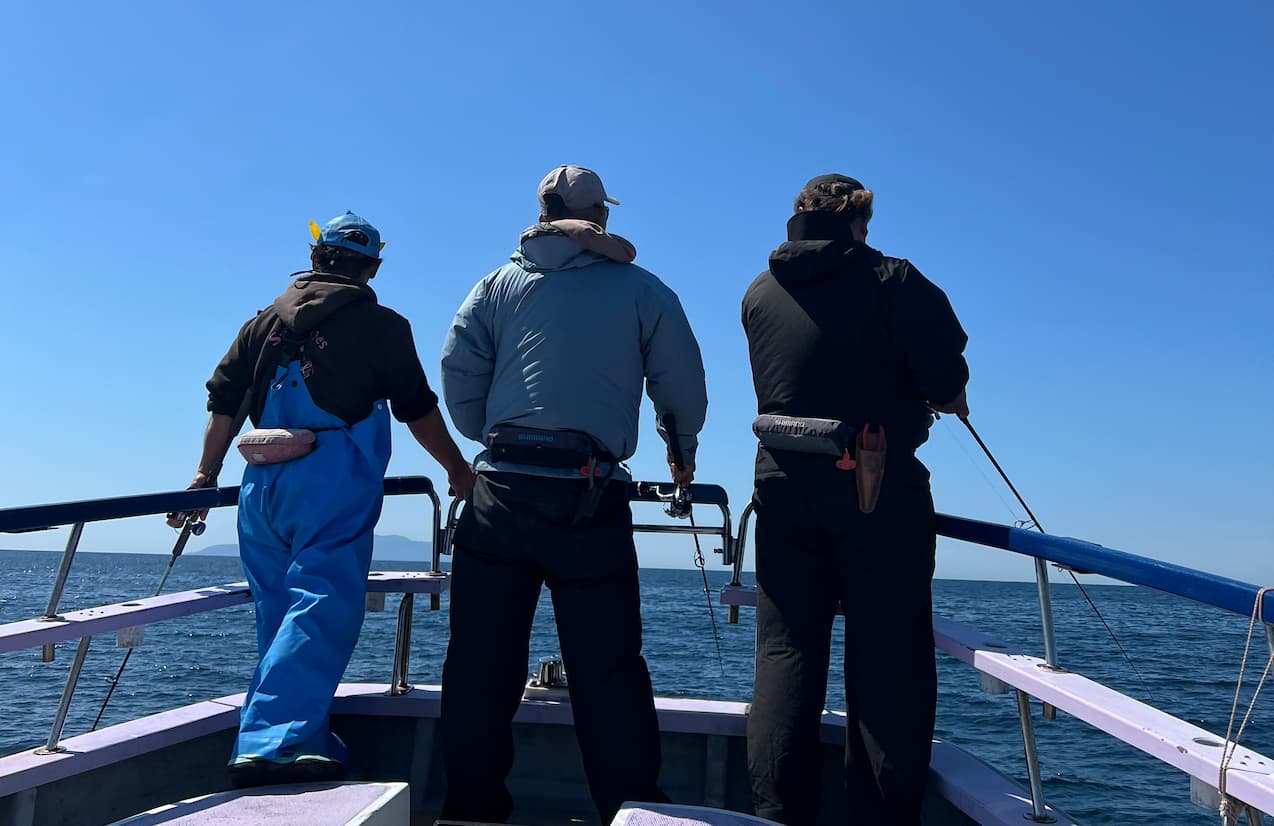
Bonito can appear suddenly. You want to be ready to cast at any time.
Tackle and Casting for Bonito
Tackle for casting for bonefish is the same as for targeting dolphinfish, with a casting rod around 7 feet long and PE No. 2 line. It is safe to tie a 50-60 lb nylon leader. A reel No. 5000 or No. 6000 is probably the safest choice.
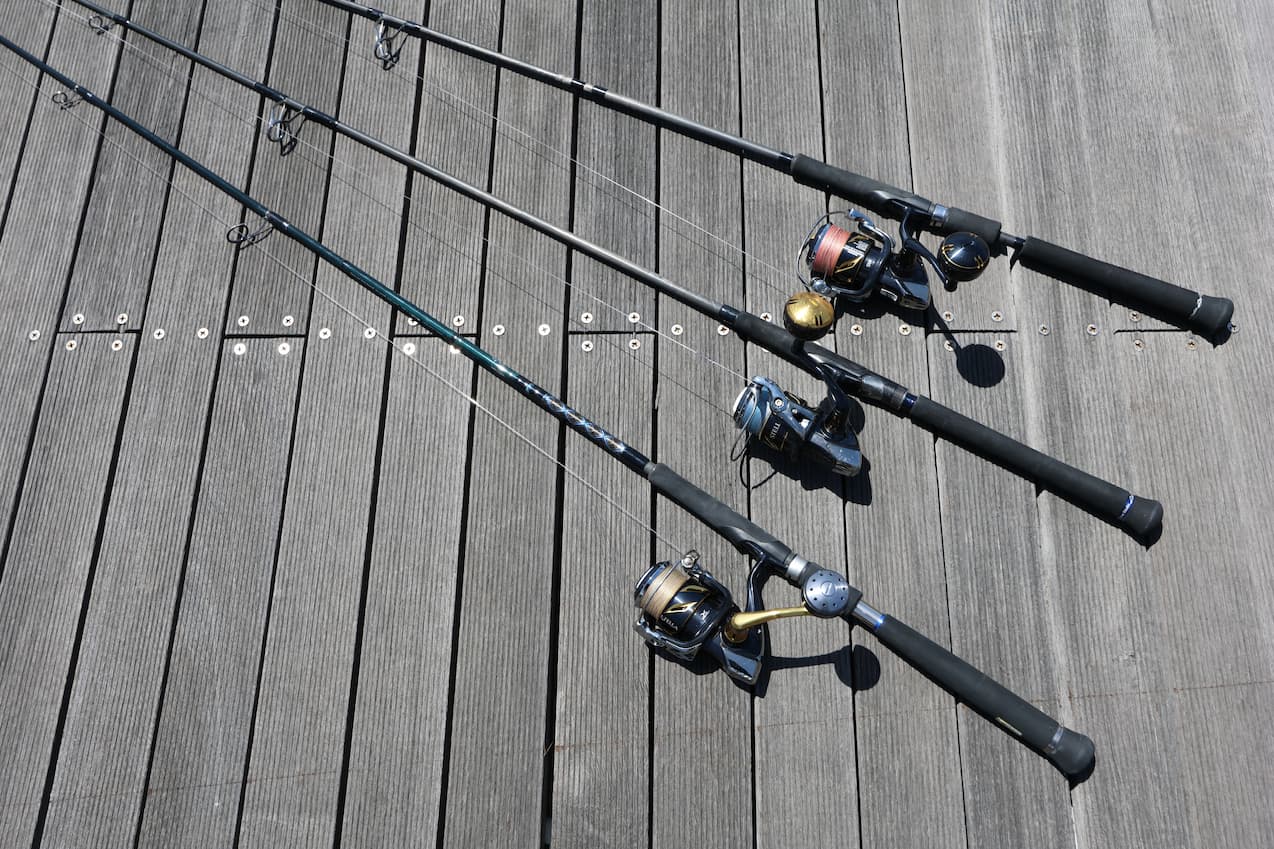
The rod, reel, and line used for casting dolphinfish should be around 7 feet, and the butt should be strong enough to pull up bonito.
The lure to cast should be a sinking pencil weighing around 30-40g for plugs. Recommended lures include Atura, Sugipen, and Gig. If you are fishing at or near the water’s edge, use the aforementioned sinking pencil.
pencil, watch the movement of the bonito, and aim at the site so that the fish lands in front of the direction the bonito is moving.

Atura
https://www.mangrove-studio.com/mangrove_s/products/ocean/ocp-at.html
Sugipen
http://supplies2011.web.fc2.com/Product_BlueJack.html
GIG
http://www.palms.co.jp/lure/product/?name=gig100s
http://www.palms.co.jp/lure/product/?name=gig-hook-100s
You can also cast small jigs. Smaller jigs would be good, up to 50g (blue jacks, skill jigs, etc.). Braid-type jigs, which are very popular these days, are also a good choice for jigs. If the fishing seat is between the torso and you have to undercast to cast, a jig that is easy to fly is easier to use.
Skill jigs
https://www.mg-craft.co.jp/pages/products-Skill_Jig.html
The key is to shoot these lures in a school and get them to bite first. If one fish hits throughout the boat, the entire school will often start biting at once, as if a switch has been flipped. Therefore, cast carefully as soon as the moving boats slow down. If you cast too early, you will not be able to move the lure enough due to the movement of the boat. On the other hand, if you cast too late, the school will move away from the boat.
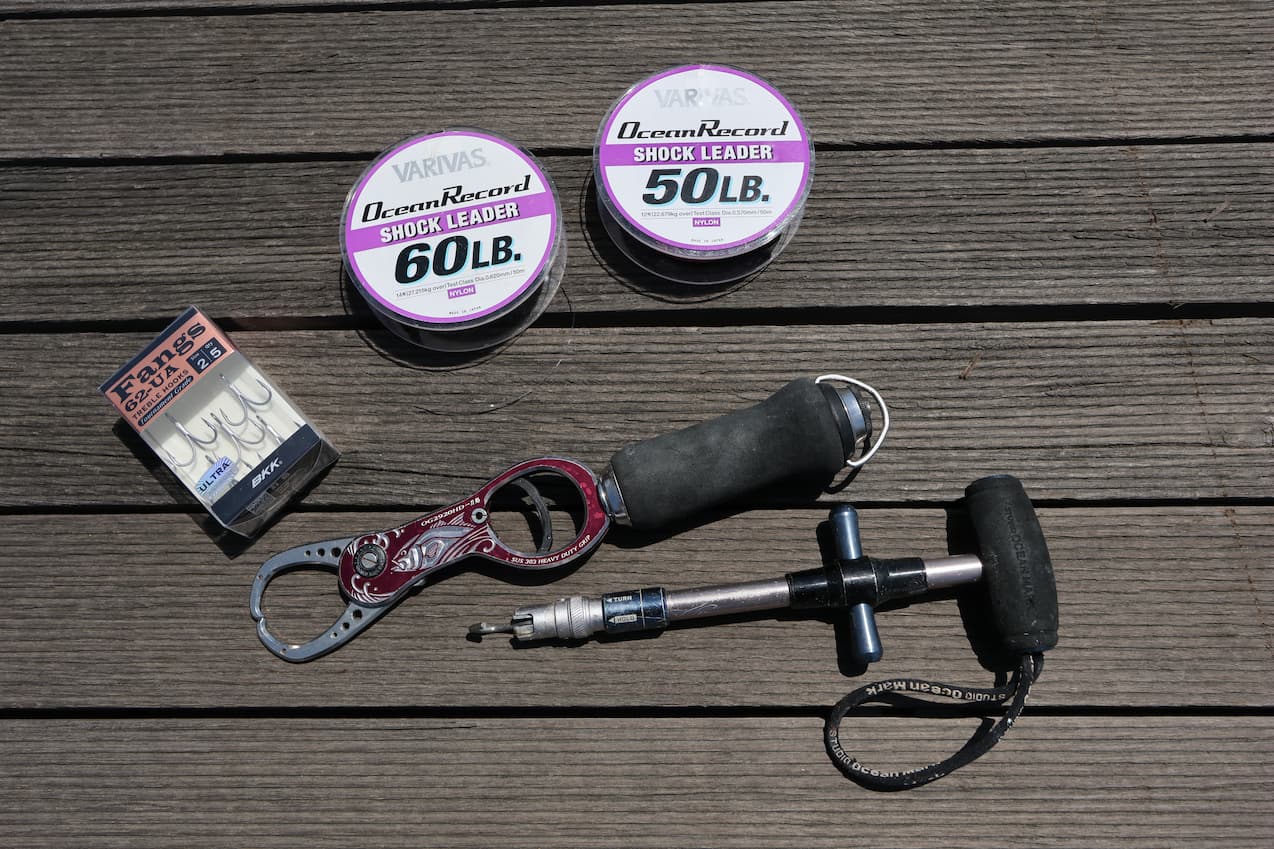
Leaders should be 50lb or 60lb nylon, and hooks should be selected to have a good sting and reliable strength. Fish grips and hook removers for removing hooks are useful!
Lures and how to move them?
After throwing the lure, use a basic pulling and skipping motion. Do not move the rod unnecessarily, but aim for a free reeling action that allows the lure to glide on the surface of the sea. Reel the lure at a speed that does not make the lure jump out of the water so that it does not go too far into the water. It is important to wind the lure at such a speed that only the hook attached to the lure touches the surface of the sea. If the jig lands too hard on the surface of the water when you cast, it will be similar to the scene of a bird piercing the water from above, and the bait will be dispersed.
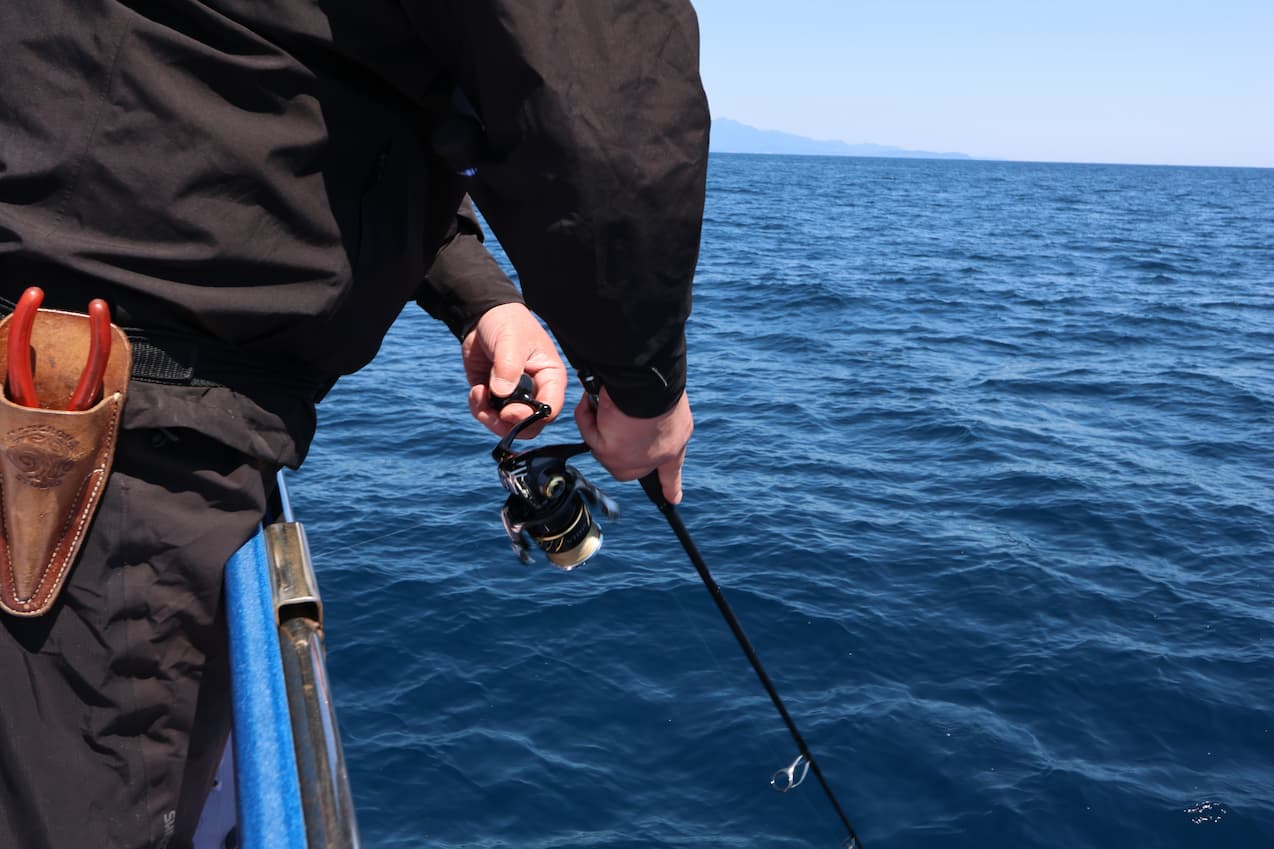
Instead of twitching the lure frequently like a dolphinfish, the lure should be reeled in so that it dances on the surface of the water as soon as it lands on the water.
Points to keep in mind when a fish hits the water
Once a skipjack is hit, synchronize your rod work and reeling with the movements of a strong and agile skipjack, reeling in the line so as not to loosen the line tension, and always keep the pressure on the line. This is the secret to avoid getting caught. If the fish weighs up to 3 kg, a reliable rod will be able to pull it out. Reel in the rod until it is close to the tip, and pull it out at once without raising the rod too much. If it is difficult to pull it out with the rod you are using, quickly pull it out with the leader. At this time, be careful about the strength of the hook, as a fine hook may stretch and be exposed.
As mentioned above, in Sagami Bay, the “yellowfin and bonito fishing with koma-sei” season opens in August. From this time onward, lure customers can also be carried on the Miyoshi, and jigging is the main method of fishing. We would like to explain the timing of this one.
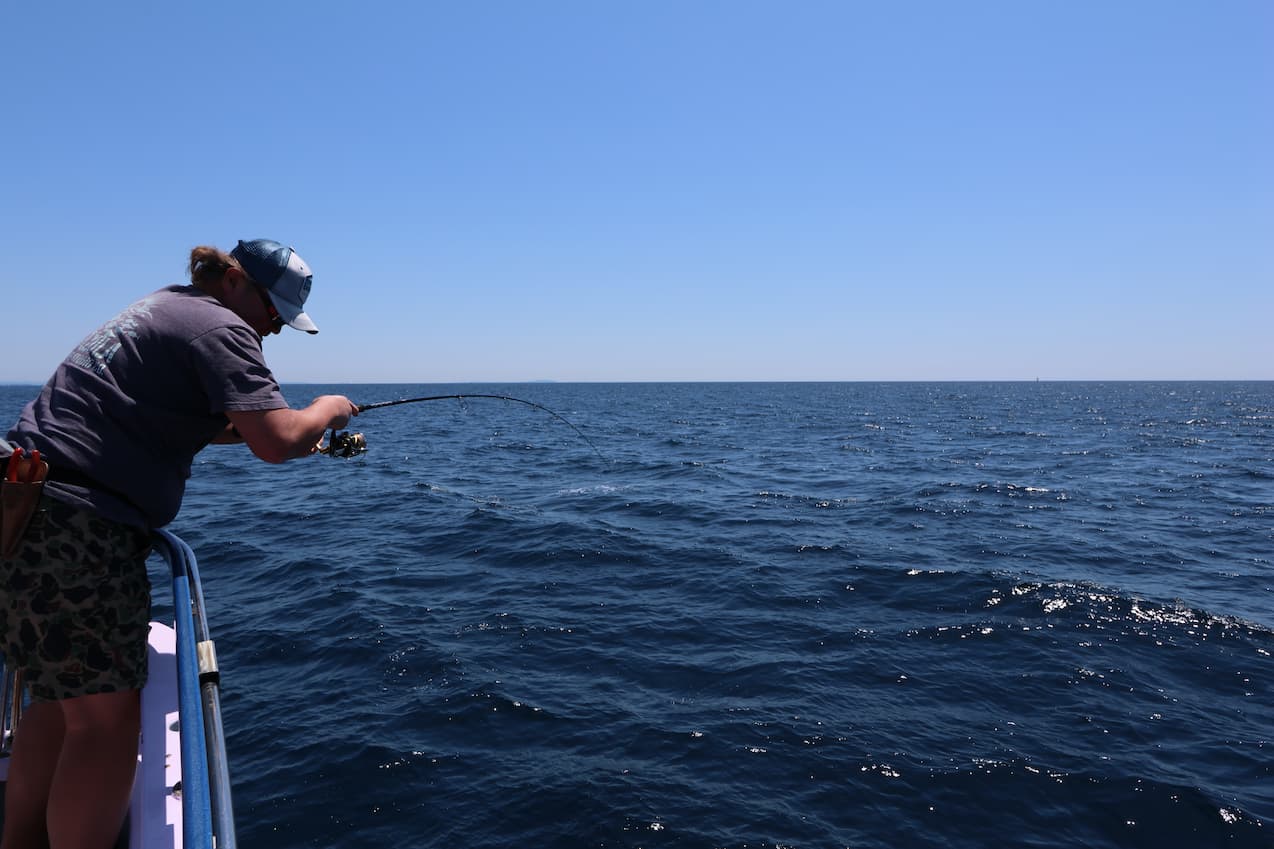
When you get a hit, keep reeling so that the run tension is always applied. If the drag is too loose and the angler is too lazy, he or she will get into a fight with another angler. Once the fish is brought to the side of the boat, scoop it up with a net or pull it out.
After all, eating caught bonito is also a pleasure!
It is said that the “first bonito” has a refreshing taste in the spring and the “returning bonito” enjoys a fatty flavor in the fall, but the bonito that enter Sagami Bay have a meat quality that cannot be described as either of these. However, the bonito that enter Sagami Bay are not as tasty as either because they feed heavily on anchovy and sometimes baby sardines as bait every day, so within a week of entering the bay, they have a delicious flavor with a hint of fine quality fat. When you catch them, you should definitely eat them as sashimi or tataki. Because I bleed the fish immediately on the boat, I find that the flesh is too elastic on the day I catch it, and the second and third days are the best days to enjoy it. I hope you will try it because the taste of caught bonito is completely different from that of purchased bonito. Because it is fresh, you can enjoy it without removing the nutritious “blood” from the fish.

As soon as the fish is caught, the gills are cut off and the blood is drained in a bucket. This is the first step to a tasty meal.

Fresh bonito is completely different from what you buy at the supermarket. Be sure to try it as sashimi or seared!!


